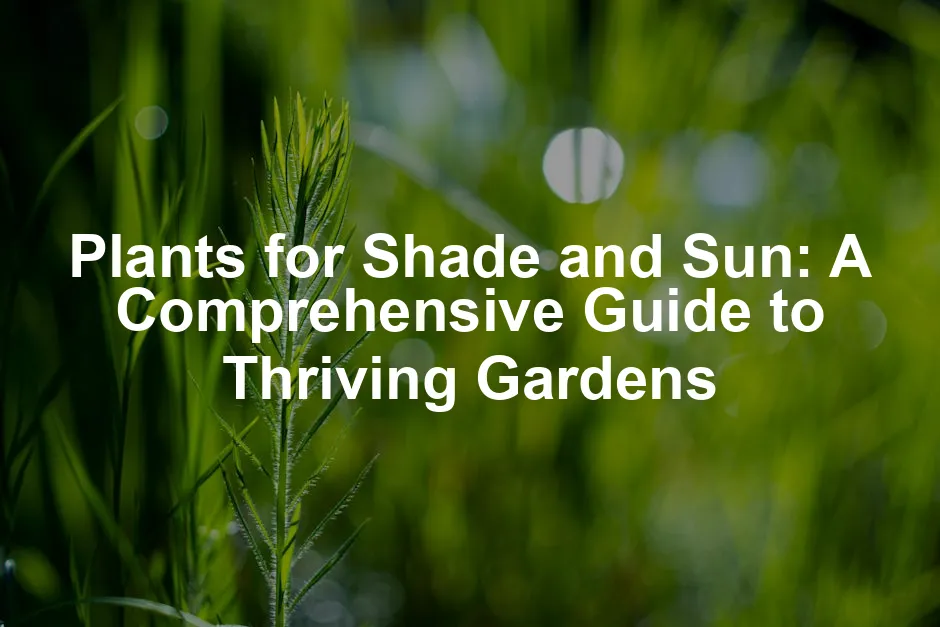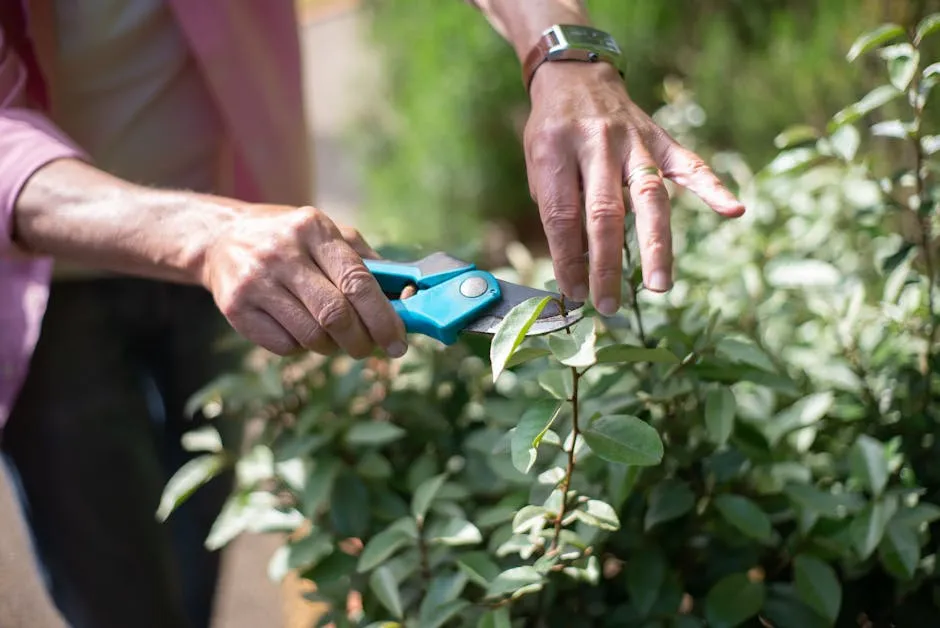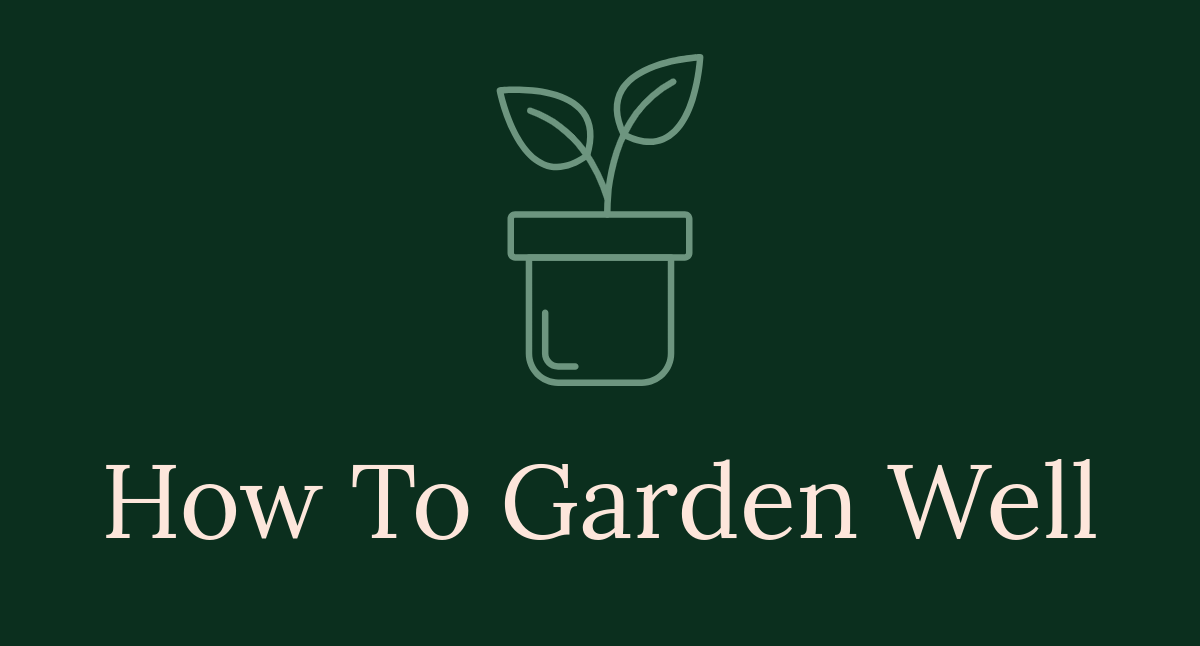

Plants for Shade and Sun: A Comprehensive Guide to Thriving Gardens
Introduction
Gardening isn’t just about sunlight. Different plants thrive in various light conditions. Choosing the right plants for shade and sun is essential for a vibrant garden. A diverse garden with both shade-loving and sun-loving plants can bring life to your outdoor space.
Summary and Overview
Understanding plant needs based on light exposure is crucial. Sun and shade plants have distinct requirements that impact their growth and health. Sun-loving plants prefer bright, direct sunlight, while shade plants thrive in lower light levels. This variety can enhance your garden’s aesthetics and boost biodiversity.
Selecting the right plants can transform your garden into a lush, inviting space. However, gardeners face challenges like soil moisture levels and plant competition. These factors can affect the health and growth of your plants. By knowing your garden’s light conditions, you can create a thriving environment for all types of plants.
If you’re looking to get started, consider using organic compost to enrich your soil. It’s a gardener’s best friend, enhancing soil structure and nutrient content while being eco-friendly!

Understanding Sun and Shade Conditions
Types of Light Conditions
Light conditions dictate which plants will flourish in your garden. “Full sun” means six or more hours of direct sunlight daily. “Partial sun” refers to four to six hours, often including some afternoon sun. “Shade” denotes areas with less than four hours of direct sunlight.
To assess your garden’s light conditions, observe how sunlight moves throughout the day. Seasonal changes can also affect light availability. For instance, trees may cast longer shadows in winter, altering the light exposure for your plants.
Understanding these light conditions helps you choose the right plants for your space. By matching plant needs with available light, you ensure a healthier, more vibrant garden.
Importance of Plant Selection
Choosing the right plants is crucial for successful gardening. When you align your plants with their preferred light conditions, you create a thriving environment. Every plant has unique needs based on light intensity. For instance, sun-loving plants flourish in bright areas, while shade plants thrive in dim settings.
When you plant according to these conditions, you enhance plant health and growth. Healthy plants grow stronger and more vibrant. They also produce beautiful blooms and lush foliage, adding aesthetic value to your garden.
However, misplacing sun and shade plants can lead to problems. Sun plants may struggle in the shade, becoming leggy or weak. Conversely, shade plants can scorch in direct sunlight. Such mistakes can diminish the overall beauty of your garden. Therefore, understanding light requirements is key to creating a successful, vibrant garden space.

Annuals and Ground Covers for Shade
When it comes to adding color to shaded areas, annuals and ground covers shine. Consider planting Impatiens. These vibrant flowers bloom in various colors, thriving in partial to full shade. Their continuous blooms make them perfect for brightening dull corners. Another great choice is Vinca, also known as periwinkle. This hardy ground cover features lovely, star-shaped flowers. It’s perfect for filling in spaces and preventing weeds.
Incorporating these plants into your garden is simple. Start by selecting a spot with shade, such as beneath a tree or beside a building. Mix and match colors for a lively, eye-catching display. Plant them in clusters for a more dramatic effect. Ground covers like Vinca can also help in controlling erosion on slopes.
For seasonal planting, aim for spring. This allows your annuals to establish before summer heat sets in. Regular watering is essential, especially during dry spells. By choosing the right shade-loving annuals and ground covers, you can create a lush, colorful garden that thrives even in low light.
And if you’re looking for seeds, grab some Impatiens seeds. They’re a delightful addition to any shady garden!

Best Plants for Sun
Thriving Sun-Loving Perennials
If your garden basks in sunlight, it’s time to explore sun-loving perennials. Options like Black-eyed Susans and Coneflowers are must-haves. Black-eyed Susans display cheerful yellow petals, attracting butterflies and birds. Coneflowers, with their unique pink blooms, are drought-tolerant and resilient.
To ensure these beauties flourish, consider their care needs. Plant them in well-drained soil with plenty of nutrients. Water them regularly, especially during dry spells. Perennials generally prefer moist soil but can withstand some drought once established.
Pest management is crucial too. Regularly check your plants for signs of pests like aphids. Introducing beneficial insects, like ladybugs, can naturally control these pests. By selecting the right perennials and caring for them properly, your sunny garden will be vibrant and full of life all season long.
And for those who want to add some flair, consider using garden decor like wind chimes. They add a whimsical touch to your sunny spots!

Annuals and Tropical Plants for Full Sun
Do you want to brighten up your garden? Full sun areas are perfect for vibrant annuals and tropical plants. Think of Marigolds and Petunias. These flowers come in various colors and bloom all summer long. They can transform any sunny spot into a lively display.
For seasonal color, choose annuals that thrive in warm weather. Zinnias and Cosmos are excellent choices too. They not only add color but also attract butterflies. You can create stunning arrangements with these plants.
Container gardening is a great way to utilize sunny spots. Use colorful pots to enhance your garden’s aesthetic. Mix different plants for a dynamic look. For instance, pair Petunias with Sweet Potato Vine. This combo offers trailing vines and bright blooms.
Fertilization is key to keeping your sun-loving plants healthy. Use a balanced fertilizer every few weeks. This ensures they receive all the nutrients needed for vigorous growth. Remember to water them regularly, especially during hot spells. A well-cared-for garden will flourish with life and color, making your outdoor space inviting and beautiful.
If you’re serious about keeping your plants happy, invest in a good garden fertilizer. It’s like a buffet for your plants!

Creating a Balanced Garden
Combining Sun and Shade Plants
Integrating sun and shade plants creates a balanced garden design. Start by identifying transition zones. These are areas where sunlight shifts from bright to dim. Use plants that can thrive in both conditions to create smooth transitions.
Plant height and structure play a crucial role. Taller plants, like Sunflowers, can stand at the back. Pair them with shorter shade-loving plants, such as Heuchera, in the front. This layering adds depth and dimension to your garden.
Color harmony is essential for a cohesive look. Choose plants with complementary colors. For instance, pair yellow Black-eyed Susans with the deep purple of Astilbe. This creates a stunning visual effect.
Lastly, consider seasonal interest. Incorporate plants that bloom at different times. This ensures your garden remains vibrant throughout the year. By thoughtfully combining sun and shade plants, you’ll enjoy a diverse and beautiful garden all year round.

Maintenance Tips for Diverse Gardens
Maintaining a garden with both shade and sun-loving plants requires attention to detail. Start with soil health. Compost is an excellent addition. It boosts nutrient content and enhances drainage.
Adding compost to your garden can greatly improve soil health and fertility. Learn more about composting basics for improving soil health
Watering is vital. Shade plants often need less water than sun plants. Monitor soil moisture regularly. A simple finger test can help. If the top inch is dry, it’s time to water. For sun plants, more frequent watering may be necessary, especially during hot spells.
Fertilizing is another key aspect. Use a balanced fertilizer throughout the growing season. Follow package instructions for the best results. Prune regularly to promote healthy growth. Remove dead leaves and spent flowers from both sun and shade plants. This keeps your garden tidy and encourages new blooms.
Pest management is essential, too. Regularly inspect plants for pests. Neem oil or insecticidal soap can help control infestations. Seasonal tasks, such as mulching in spring, can regulate soil temperature and moisture. By following these tips, your diverse garden will thrive beautifully.

Conclusion
Understanding the needs of sun and shade plants enhances your gardening experience. By selecting the right plants, you can create a stunning and diverse outdoor space. Experimenting with various combinations will bring joy and beauty to your garden. Don’t hesitate to try new plant pairings. With confidence, transform your garden into a vibrant haven!
Please let us know what you think about our content by leaving a comment down below!
Thank you for reading till here 🙂
All images from Pexels



